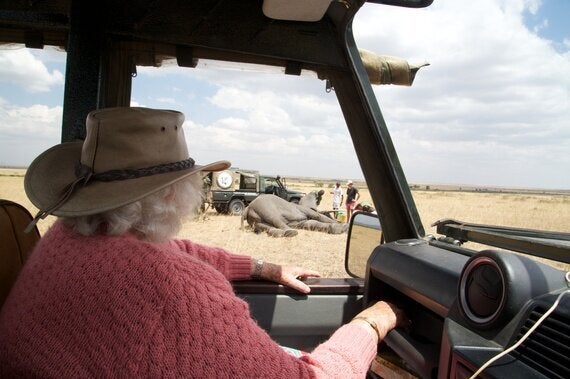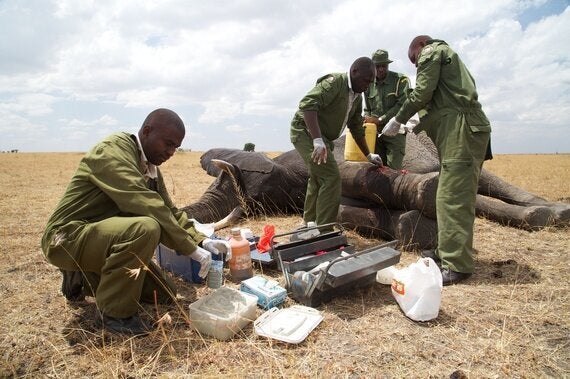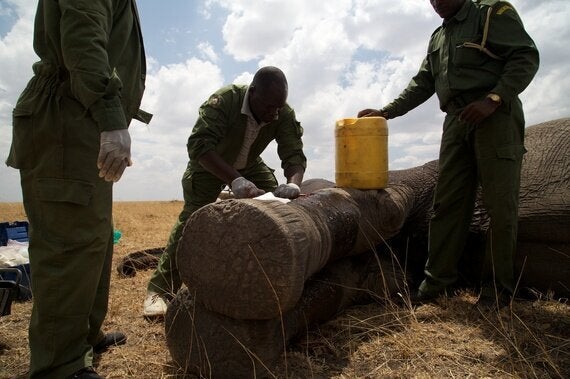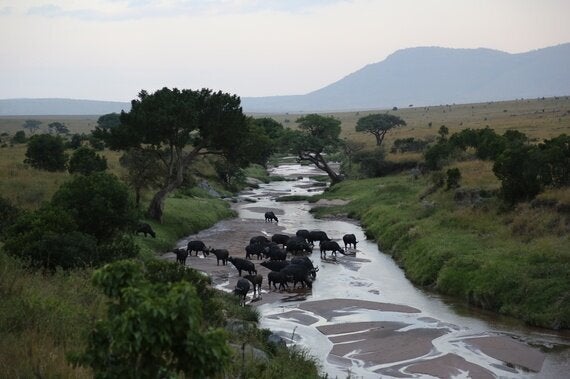There is no place in the world like the Masai Mara during the migration season. This wildlife spectacle within such a beautiful setting must surely be unrivaled on earth, and this year the migration is arguably more breathtaking than ever.
I've been lucky to observe the migration first hand from a beautiful camp on the sand river, at a place where hundreds and thousands of wildebeest and zebra cross annually. But along side this beauty, I witnessed how fragile it is - as I saw first hand the impact that human-wildlife conflict is having on our most iconic wild animals.

Copyright: The David Sheldrick Wildlife Trust
Yesterday we were able to accompany the DSWT/KWS Mara Mobile Veterinary Unit funded by the Minara Foundation with KWS Veterinary officer Dr. Limo on a treatment mission of a bull elephant with a spear wound to the front leg. With the saffron colored Mara plains, awash with the migration of wildebeest, zebra and eland, the team went in search of the injured elephant. It was not long before he was spotted on his own in a Euclea thicket through which ran a small lugga. Using two cars, one on either side of the thicket, the elephant was persuaded to leave cover and head out onto the open plains where he was successfully darted. After seven minutes he succumbed to the immobilization but fell with the injured leg beneath him.

Copyright: The David Sheldrick Wildlife Trust
The vet covered his eye with his ear, and poured water over his ear and head to keep him cool throughout the operation. A small stick was placed to keep his truck open to ensure that he could breathe while under the effect of the drug. Ropes were inserted beneath his front and back legs and the car pulled him so that he lay on his right side to allow the Vet to work on the wound.

Copyright: The David Sheldrick Wildlife Trust
The wound was a deep penetrating spear wound but thankfully missing the bone. It was cleaned well and long acting antibiotics and anti-inflammatories administered and finally packed with green clay before the revival drug was inserted into an ear vein. Groggily he got to his feet within three to four minutes, but soon regained control and began to head back out across the plains.
We are hopeful that due to timely treatment he will make a full recovery. The elephant is a young bull in his twenties, with most of his life ahead of him, which we hope he will enjoy in peace. Cases like this unfold between the DSWT funded four Mobile Units almost daily and only through timely intervention do these individuals have any hope of survival.

Copyright: The David Sheldrick Wildlife Trust
The success of the Veterinary project, in partnership with the Kenya Wildlife Service, is one of which I am incredibly proud. Nothing can be more satisfying than affording an animal like an elephant whose life expectancy rivals our own, a second chance at life.
Find out more about the lifesaving work of the David Sheldrick Wildlife Trust at: www.sheldrickwildlifetrust.org